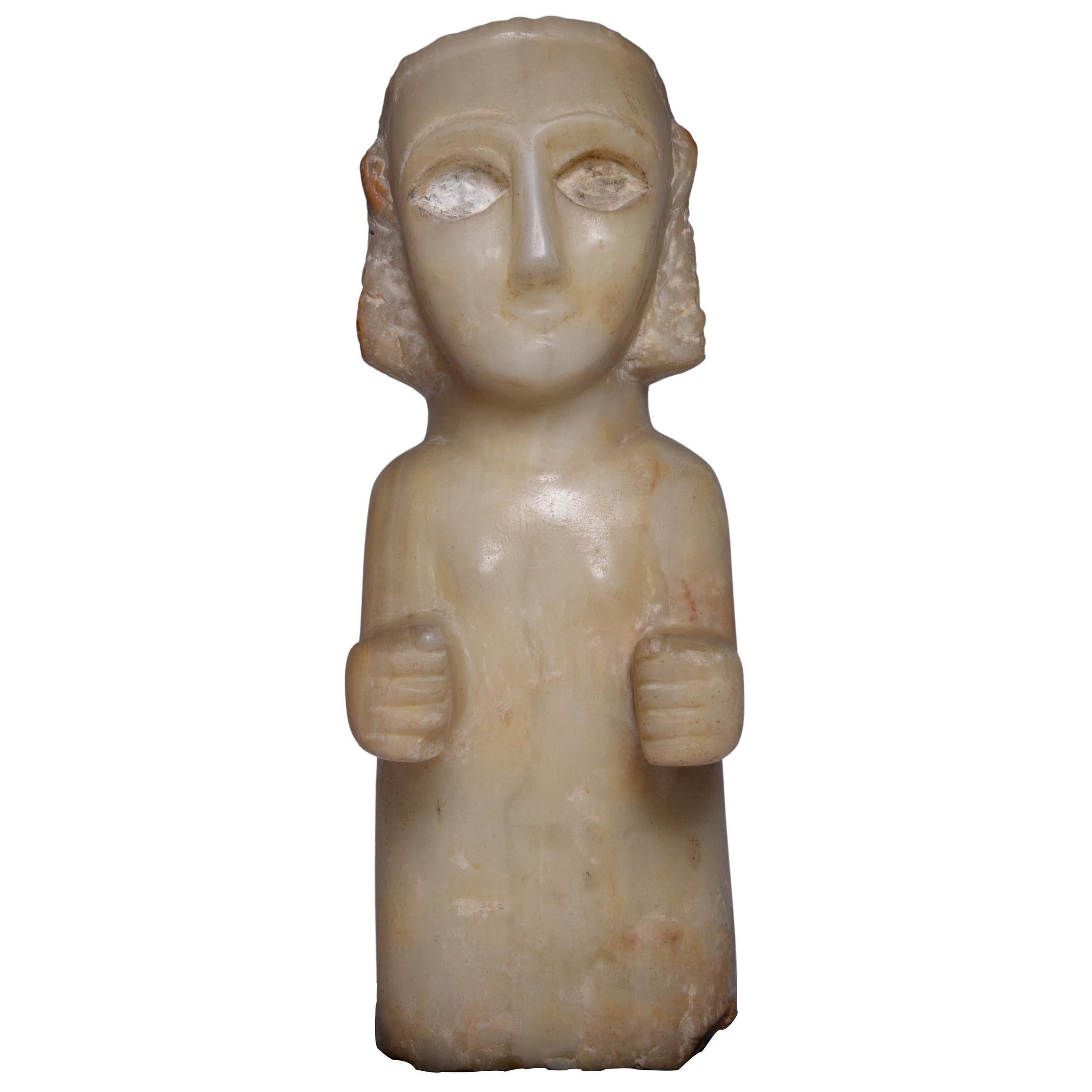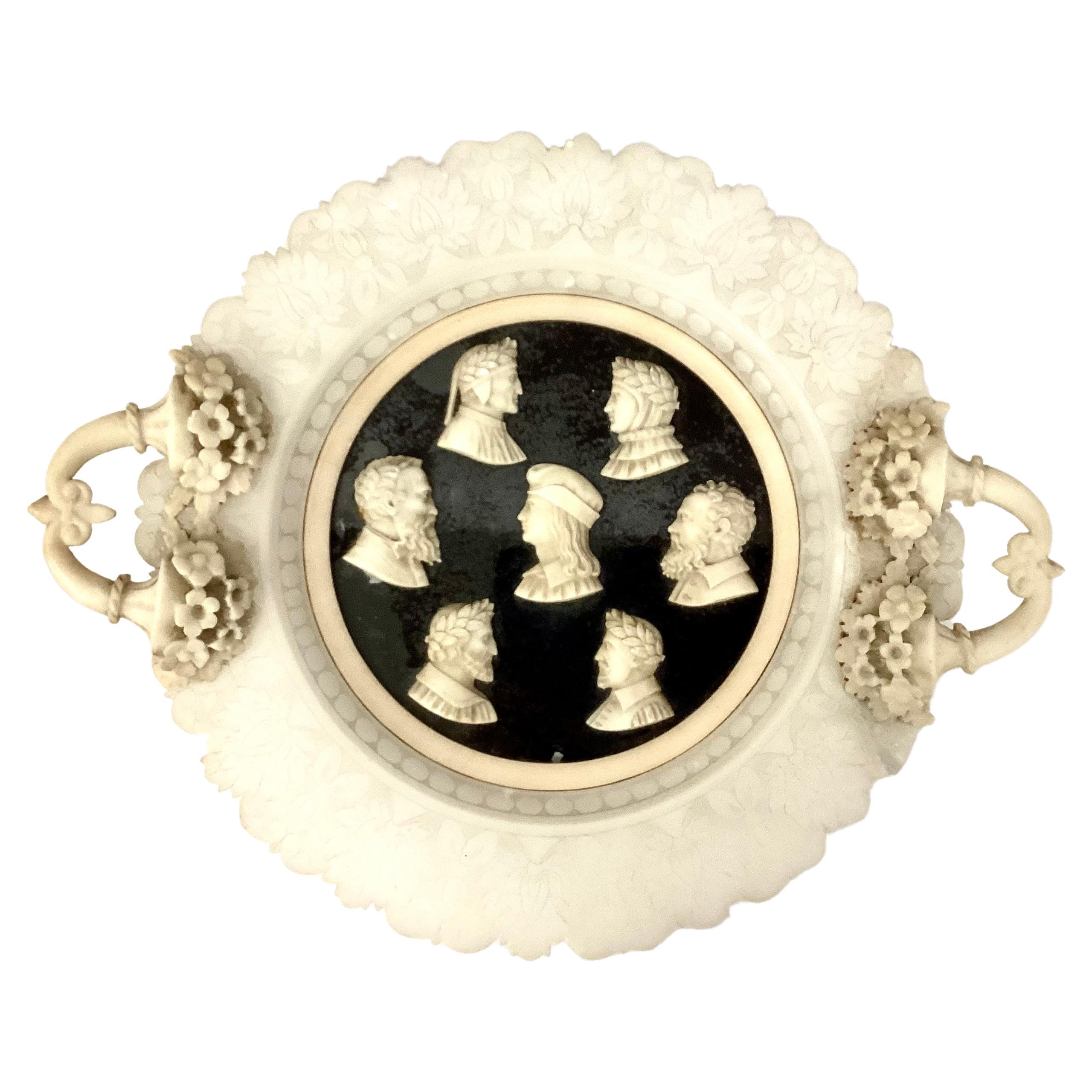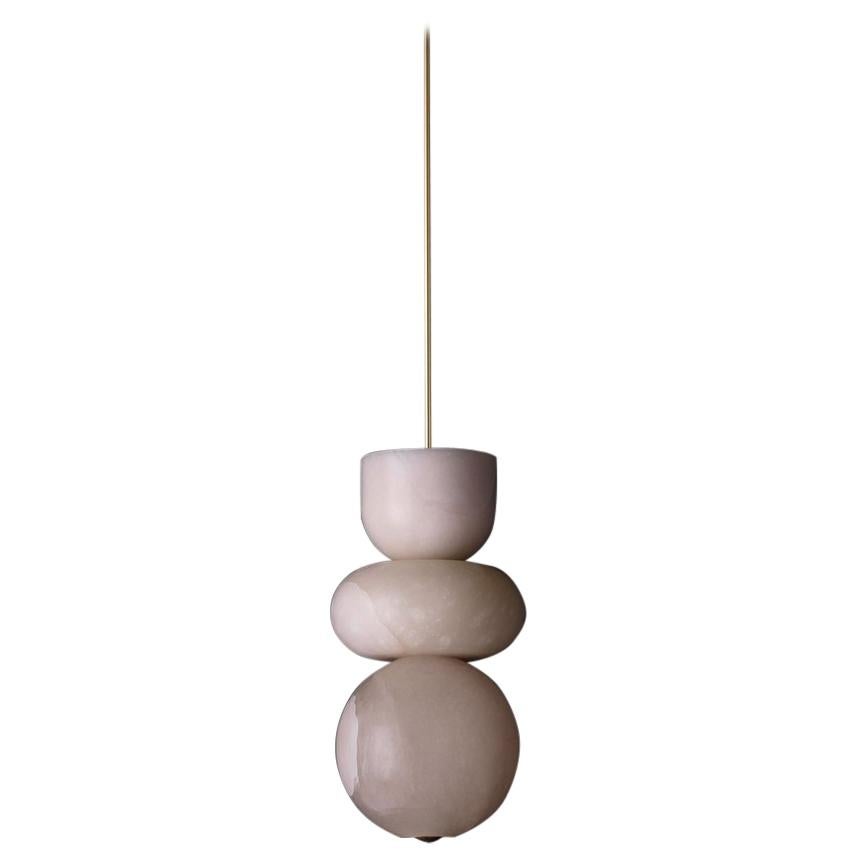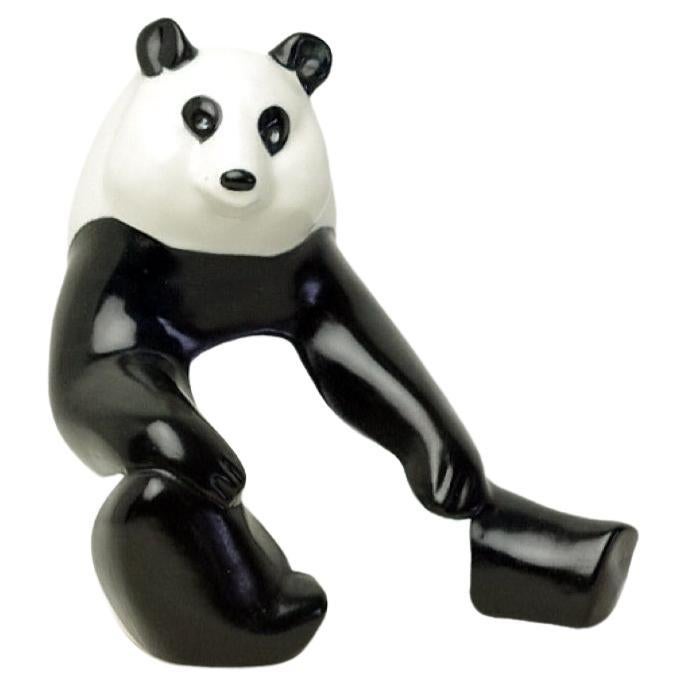Items Similar to Ancient South Arabian Alabaster Inscription
Video Loading
Want more images or videos?
Request additional images or videos from the seller
1 of 8
Ancient South Arabian Alabaster Inscription
About the Item
South Arabian Alabaster Inscription
Calcite Alabaster
circa 1st century A.D.
‘’Consequently, neither white marble of Paros nor any other stone which men admire can be compared with the precious stones of Arabia, since their whiteness is most brilliant, their weight the heaviest, and their smoothness leaves no room for other stones to surpass them.’’
- Diodorus Siculus, Library of History, Book II, 52.9
This inscription, finely worked on an alabaster tablet, is a remarkably well preserved example of Ancient South Arabian script, with its distinct bold, angular forms, written in the Qatabanic dialect - that is, the dialect spoken by the people of the kingdom of Qataban, which ruled much of modern day Yemen from the 7th Century B.C. to the 2nd Century A.D. The text, which reads: ‘[... ...]sa?d and Ma?add?i- / (of the lineage) of Hawfa- / She entrusted Anb- / against any malfeasance (which would remove it) from its place’ - indicates that it likely served to commemorate a temple offering. The quality of the script, incised so neatly into the surface of the alabaster, tells us that this piece was commissioned by somebody of considerable wealth and prestige, employing a scribe of equally considerable expertise.
South Arabia was known throughout the ancient world for its incredible wealth - so much so that the Romans termed the region ‘Arabia Felix’ - literally, ‘Happy, or Fortunate, Arabia.’ That wealth was built largely on the trade of spices and incense, in which the Kingdom of Qataban played a major part. According to Pliny the Elder, this was the sole country through which frankincense could be exported, first being collected in the city of Shabwa, on the South Arabian coast, and from there travelling by camel up to Gaza, to be shipped all across the Mediterranean - not only that, but all growers of myrrh across Arabia were required to give a quarter of their yield to the king of the Qatabanians. As such, the kingdom became exceedingly rich and powerful, and Pliny goes on to tell us that ‘The nations of the Larendani and the Catabani, and the Gebanitæ [...] occupy a great number of towns, the largest of which are Nagia, and Thomna (the capital of Qataban) with sixty-five temples, a number which fully bespeaks its size.’ Because of the nature of its exports, frankincense in particular - the ‘sweat of of the gods’ according to the Egyptian Book of the Dead, and perhaps most famous as one of the three gifts brought to the newborn Christ - being closely associated with the divine, South Arabia’s reputation in antiquity was as a mysterious, almost sacred, and - crucially - extraordinarily wealthy region, at the very edge of the known world; in the words of Herodotus: ‘’Enough of marvels, and yet the land of Arabia gives off a scent as sweet as if divine.’’
This inscription invokes the protection of god Anbay, the judge-oracle of the chief god ‘Amm, who he served as an attendant. Much of what we know of the religious life of the ancient South Arabians comes to us from early Islamic texts, describing what is known in Islamic scholarship as ‘Jahiliyyah’ - the age before the advent of Islam in Arabia. What comes across in much of these texts is that these religious practices placed a great deal of emphasis on sacred stones, perhaps linked to the brilliance of the alabaster which is local to the region, and which a great many of the cult-objects produced in this time are made from. Hisham ibn-Al-Kalbi’s Book of Idols records: ‘’The Arabs were passionately fond of worshipping idols [...] Whenever a traveller stopped at a place or station in order to rest or spend the night, he would select for himself four stones, pick out the finest among them and adopt it as his god, and use the remaining three as supports for his cooking-pot.’’
This inscription was once in the collection of the intrepid British-Australian travel-writer, Barbara Toy. In the late 1960s, she arrived - in her Series 1 Land Rover, affectionately nick-named ‘Pollyanna’ - at the port of Bi’r Ali, in Western Yemen, through which once flowed, as she wrote: ‘’ivory, tortoise-shell, indigo, gold, pearls, diamonds and sapphires, silks and spices – all the treasures of Africa, India and the Far East—and most important of all the sacred and mystic frankincense.’’ Over tea with the Sultan, she made plans from there to travel the path of the Three Magi, the biblical Queen of Sheba, and Victorian explorer Saint John Philby - up the Red Sea coast, following the Hijaz Railway, through the Holy Land, and arriving at last in the city of Damascus. This took place in the midst of the North Yemen Civil War, and at the time, it was extremely difficult for anybody, particularly a woman travelling alone, to pass through the region as a foreigner - accounts of her life describe how Barabra, ever determined, would often disguise herself as a man in order to gain access to places otherwise totally out of reach, all of which is recorded in her book, ‘’Travelling the Incense Route’’, published posthumously in 2009.
In recognition of her work, travelling solo across Africa and Asia throughout the in the 1950s and 60s, and twice circumnavigating the globe, she was made a fellow of the Royal Geographical Society, and received the Rover Award for one of her expeditions - she was also the author of nine books, chronicling her travels, as well as a number of plays and screenplays.
Measures: 20.5 x 13 cm
Provenance:
Acquired by Barbara Toy, 1950/60s
Thence by descent.
- Dimensions:Height: 8.08 in (20.5 cm)Diameter: 5.12 in (13 cm)
- Materials and Techniques:
- Place of Origin:Yemen
- Period:
- Date of Manufacture:circa 1st Century A.D
- Condition:Wear consistent with age and use.
- Seller Location:London, GB
- Reference Number:
About the Seller
5.0
Recognized Seller
These prestigious sellers are industry leaders and represent the highest echelon for item quality and design.
Established in 2008
1stDibs seller since 2014
100 sales on 1stDibs
Typical response time: 5 hours
Associations
LAPADA - The Association of Arts & Antiques DealersInternational Confederation of Art and Antique Dealers' AssociationsThe British Antique Dealers' Association
- ShippingRetrieving quote...Ships From: London, United Kingdom
- Return PolicyA return for this item may be initiated within 14 days of delivery.
More From This SellerView All
- Ancient South Arabian Alabaster StatueLocated in London, GBSouth Arabian Calcite female figure 3rd Century BC to 1st century A.D. Calcite Alabaster height: 30.5 cm A magnificent alabaster female figure, a f...Category
Antique 15th Century and Earlier Yemeni Figurative Sculptures
MaterialsAlabaster
- Ancient Greek Corinthian HelmetLocated in London, GBCorinthian helmet with Bull Horns and Lotus Flower Decoration. Archaic Period, c.550-500 BC. Cast, hammered and incised bronze. An exceptionally well preserved example of one of the most iconic ancient Greek...Category
Antique 15th Century and Earlier European Classical Greek Mounted Objects
MaterialsBronze
- Ancient Egyptian Monumental Temple SphinxesLocated in London, GBA pair of monumental limestone sphinxes of Pharaoh Nectanebo I, from the processional avenue of the Serapeum of Memphis, 30th Dynasty, circa 379 - 360 BC. The sphinxes of the Serapeum have captivated travellers since Roman times. However, despite their significance, they are conspicuously absent from the collections of most major museums. Indeed, their existence in private hands is so improbable, and their imitations so numerous, that the present sphinxes were assumed to be modern copies throughout their recent ownership history. Finally recognised and conserved after an extraordinary chance discovery at a garden furniture sale...Category
Antique 15th Century and Earlier Egyptian Egyptian Figurative Sculptures
MaterialsLimestone
- Ancient Silver Celtic Tetradrachm CoinLocated in London, GBCeltic ‘Dachreiter’ Tetradrachm Minted in Eastern Europe, circa 1st-2nd Century B.C. Silver A magnificent Celtic tetradrachm of the Dachreiter (“roof-rider”) type, minted by a C...Category
Antique 15th Century and Earlier Mounted Objects
MaterialsSilver
- Ancient Greek Hellenistic Bronze Statuette of SatyrLocated in London, GBBeautifully cast statuette of a satyr, Greek, Hellenistic Period, 3rd-2nd Century BC, solid cast bronze The present work is a wonderful example of the finest Hellenistic style. The ...Category
Antique 15th Century and Earlier Greek Classical Greek Figurative Sculpt...
MaterialsBronze
- Ancient Greek Perfume BottleLocated in London, GBAthenian Black-glaze perfume pot with inscription Athens, c. 425-400 B.C. Terracotta Measures: Height: 9cm; diameter across lip: 7.5cm; width including handle: 9cm This 5th Cen...Category
Antique 15th Century and Earlier Italian Classical Greek Bottles
MaterialsPottery
You May Also Like
- Italian Grand Tour Marble and Alabaster Plaque of Ancient Scholars - PoetsLocated in Bradenton, FLRare Italian Grand Tour marble and alabaster plaque with profile faces of ancient Italian scholars and poets, including Michelangelo, Dante, Aristo, G...Category
Antique 19th Century Italian Grand Tour Mounted Objects
MaterialsAlabaster, Marble
- Arabian Nights JaguarBy HechizooLocated in New York, NYThe Arabian Nights Jaguar by Hechizoo, a black cast bronze sculpture that captures the essence of power, grace, and mystique embodied by the enigmatic jaguar. This remarkable piece, ...Category
2010s Colombian Animal Sculptures
MaterialsBronze
- Windmill with inscription, early 20th C.Located in Aalsgaarde, DKCarved model windmill with inscription, early 20th C.Category
20th Century Mobiles and Kinetic Sculptures
MaterialsWood
- Alabaster Totem 3By Allied MakerLocated in Glen Cove, NYInspired by the beauty of an ancient material, the Alabaster collection aims to showcase the magical translucency of this precious stone. Light fl...Category
2010s American Chandeliers and Pendants
MaterialsBrass
- Lillemor Mannerheim Klingspor, Panda WWF, ArabiaBy Lillemor Mannerheim, ArabiaLocated in MAASTRICHT, LIProduct Description: This panda designed by Lillemor Mannerheim was made for WWF and part of the sales of the items was donated to this organisation. Mannerheim, being a member of ...Category
Vintage 1980s Finnish Animal Sculptures
MaterialsFaience
- Alabaster FountainLocated in Madison, MSThis beautiful and ornate piece is in perfect condition.Category
Mid-20th Century French Figurative Sculptures
MaterialsAlabaster
Recently Viewed
View AllMore Ways To Browse
Ancient History
Ancient Diamond
Ancient Surfaces
D Plan
Alabaster Antique
Antique Alabaster
Modern Alabaster
Decorative Antique Books
Ancient Egyptians Gold
Gift For A Man
Antique History Book
Arabian Modern
South African Gold
Antique Book Rest
Antique Book Rest Antiques
Antique Furniture South East
Ancient Roman Stone
Ancient Roman Marble





